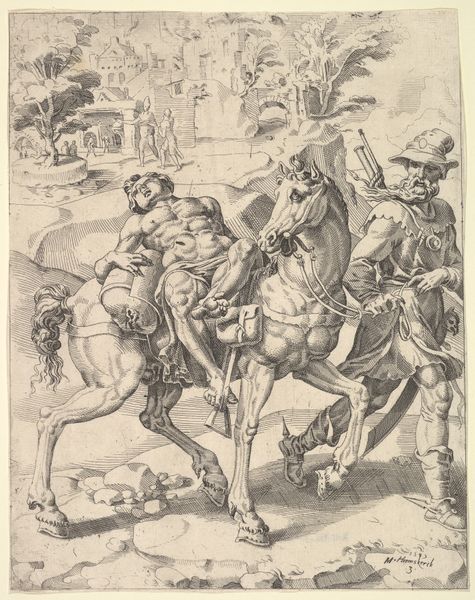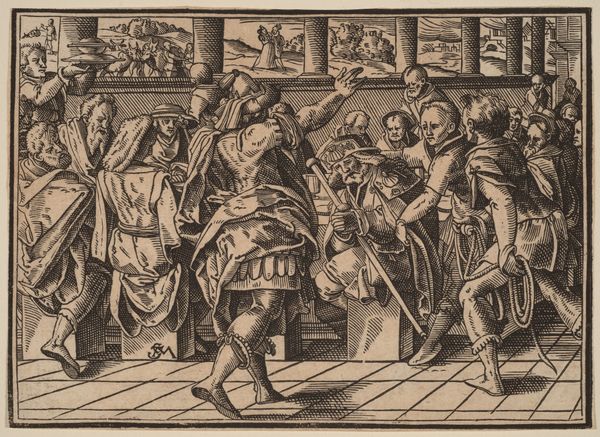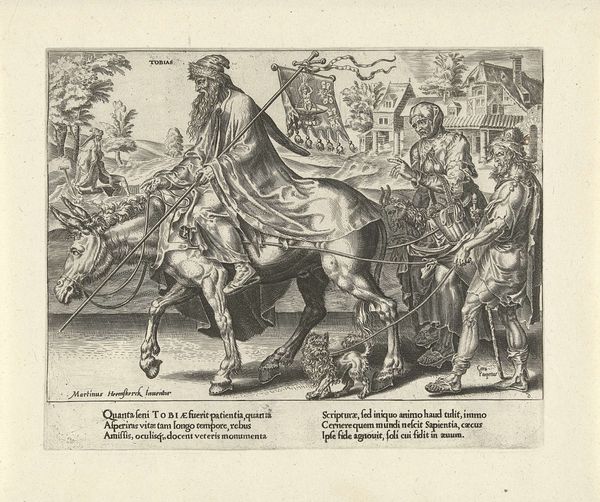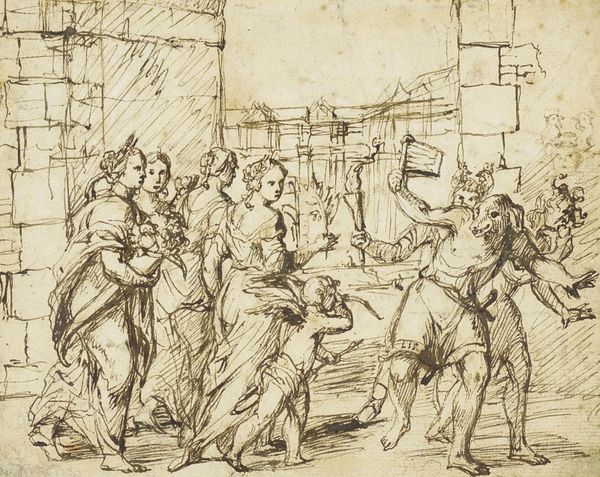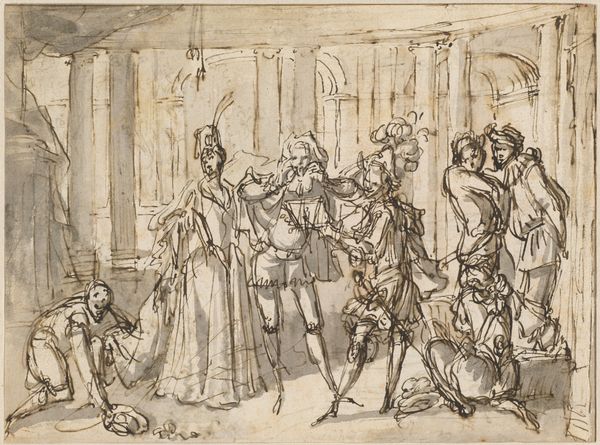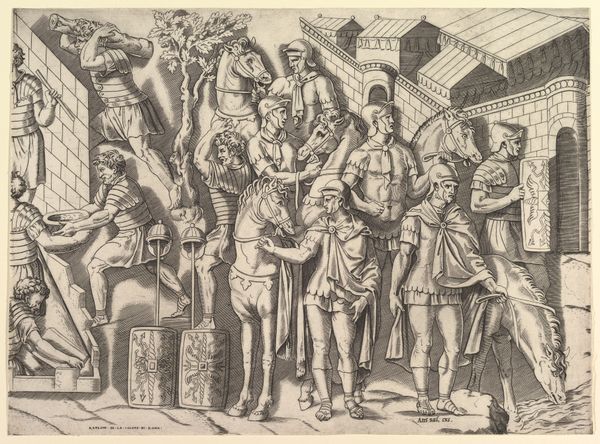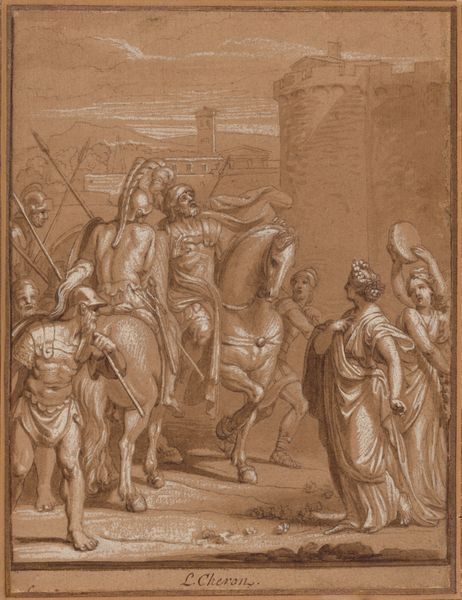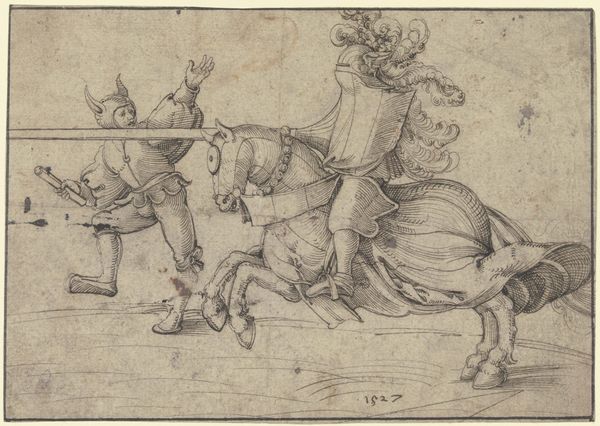
drawing, print, paper, ink, pen
#
drawing
#
narrative-art
# print
#
figuration
#
paper
#
11_renaissance
#
ink
#
pen
#
cityscape
#
genre-painting
Dimensions: 5 1/16 x 5 7/16 in. (12.8 x 13.8 cm)
Copyright: Public Domain
Editor: Here we have Hans Ulrich Fisch vom Stein I’s "Triumph of Mordecai," created sometime between 1600 and 1647. It's an ink and pen drawing on paper. The muted brown tones give it an antique feel, almost like looking at a faded tapestry. I'm curious about the technique used to create the depth and textures here. What stands out to you about this piece? Curator: What strikes me is the very tangible nature of its creation. The drawing itself – the paper, the ink, the labor involved in its making. This isn’t some ethereal vision, but a product of specific materials and human effort. Look at the quality of the paper, possibly laid, handmade. Consider the cost of materials like ink in the 17th century. This elevates what we may traditionally consider minor art or even 'craft' into a significant artifact that reveals much about consumption, skill and class. What statement might the artist be making about value of material and labour itself? Editor: So, by emphasizing the material components, we shift from a purely narrative interpretation – Mordecai's biblical triumph – to something more grounded in the socio-economic context of its creation? Curator: Exactly! And what about the physical making of this picture? Notice the marks from the pen – each stroke, each line. They indicate intention, a careful building of form and space, the very material of its construction. There are even changes and second thoughts on display, a record of decision making through manual labor! In contrast to high Renaissance art theories, we can see his artmaking on paper. This highlights the value placed in art making beyond pure storytelling. Editor: I hadn’t considered the physical creation so deeply. Now I’m seeing the details – the slight imperfections in the paper, the varying thickness of the ink lines – as crucial parts of the story. Curator: This piece reminds us that art is fundamentally about production, material and social conditions and meaning making. By focusing on its material reality, we can better understand its original context and the intentions of its maker and, of course, question all of our values. Editor: Thanks, I learned a lot about art making and labor in art! I will be certain to apply these notions for the future!
Comments
No comments
Be the first to comment and join the conversation on the ultimate creative platform.



